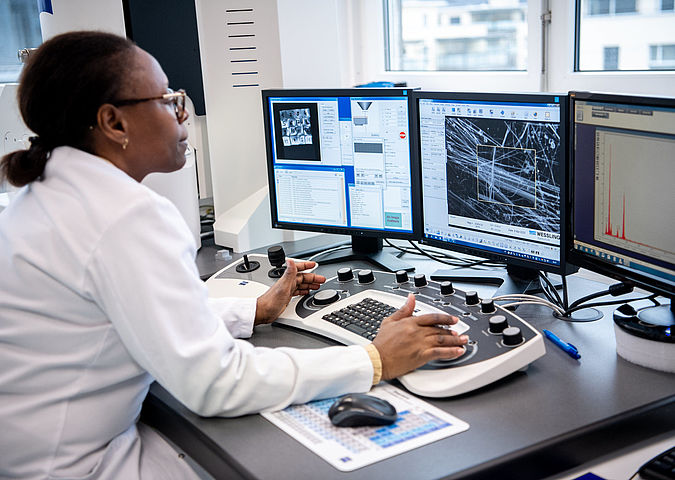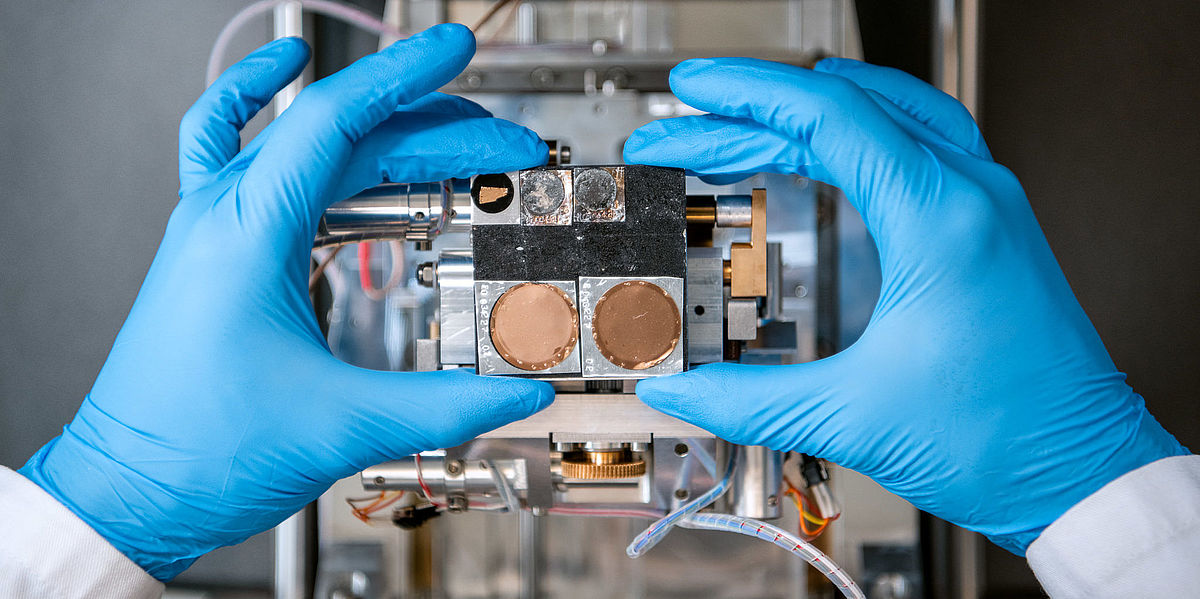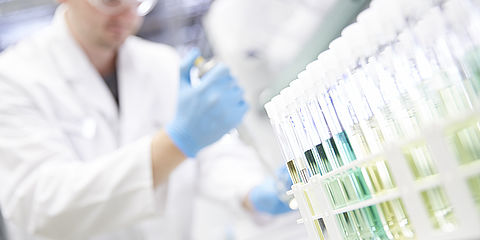Analysis of material samples and measuring for asbestos
The need to examine asbestos as in building materials is still high and exposure to the pollutant, for example in putty, is often not recognisable at first glance. Increase your safety with our asbestos analysis.

In Germany alone, several 100,000 tonnes of asbestos were used in construction until the early 1990s, both in the private sector and in public buildings, such as schools and kindergartens. The invisible and banned pollutant can still be found today in a wide variety of building materials that were used at the time, such as asbestos sheets, bitumen, tar, roofing felt, screed, glue or filler. This leads to a continuous high demand for testing, for which our analysis specialists are available for you. We analyse your material samples quickly, safely and discreetly in our specialised laboratories.
Our services at a glance
- Analysis of various matrices for asbestos, such as building materials, asphalt, roofing felt, etc.
- Analytical determination of materials containing asbestos in accordance with VDI 3866
- Asbestos determination according to VDI 3866
- Asbestos measurements according to VDI 3876-E
- Measurements of asbestos in indoor air in accordance with VDI 3492 and BGI/GUV-I 505-46
- Analysis of dust contact samples according to VDI 3877
- Analysis of building rubble according to VDI 3876 and soil
- Water analysis according to DVGW No. 40 and analysis of water sediment
- Analysis of artificial mineral fibres (AMF)
Your contact person for asbestos analysis
- Michael Mista
- +49 234 6897-119
- michael.mista@wessling.de

How we work: our specialised asbestos laboratory
We at WESSLING have been successfully analysing building materials for asbestos since 1990. Today, our highly specialised laboratory has grown to 17 trained and experienced employees who detect asbestos in a wide variety of matrices with a detection limit of up to 0.001 mass percent.
Depending on the matrix and the expected load, the sample is first concentrated. Heat or hydrochloric acid is added to help destroy the matrix of the extremely resistant fibres. The remaining material can then be spread directly onto a sample carrier or filtered as a suspension through a gold-coated core pore filter.
The specimen is then covered with a wafer-thin layer of pure gold so that the electrons shot in the SEM can also be discharged. In the scanning electron microscope, we then manually search the specimen for the hazardous substance at various optical magnifications (50x to 2400x). Since the fibres attach very closely to many non-hazardous minerals such as talc, it requires both chemical detection and a finding of certain morphological characteristics to identify asbestos. Therefore, scanning electron microscopy techniques have become established in this field.
Our asbestos laboratory has also been regularly used, for many years, as a validation laboratory for ring tests. Our staff also cooperate with bodies such as the VDI with regard to the elaboration of existing standards and the development of new ones.
Order forms: Click here to download!
Prioritise your samples in our WESSLING customer portal

If you need the analysis results of your asbestos samples quickly or by a specific date, why not use our new service and prioritise your asbestos analysis orders in our WESSLING customer portal? Depending on the sample type, you can easily select our Standard, Rush, Express and Premium Express options in the ordering process. The completion date is displayed directly to provide more planning security for your projects.
Advantages: The surcharge for the Express and Premium Express prioritisation options is only payable by you if we deliver on time.
You would like to learn more?
Your personal customer advisor will be happy to provide you with the relevant offers for our prioritisation concept in our WESSLING customer portal.


